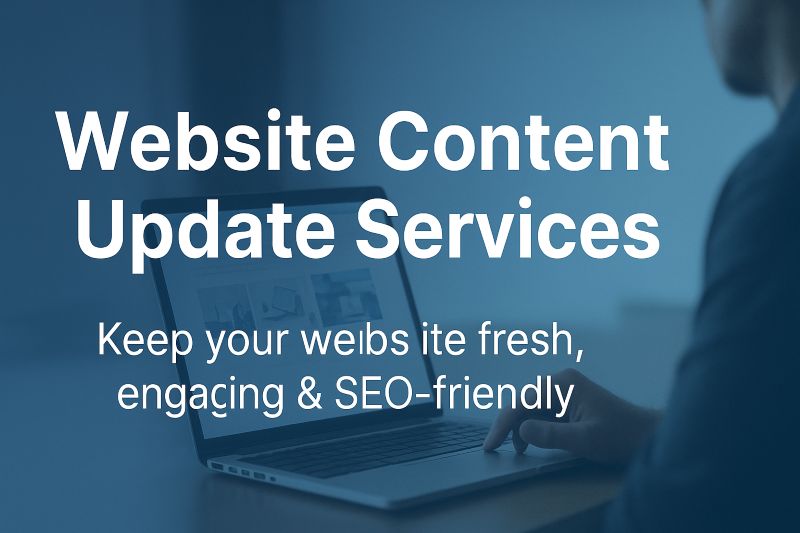That’s where Website Content Update Services come in a professional solution to keep your website’s content fresh, accurate, and optimized for both users and search engines.
Your website is your business’s digital identity it represents who you are, what you offer, and how professional your brand appears online. But in the fast-changing world of digital marketing, old or outdated content can quickly damage your brand’s image.
What Are Website Content Update Services?
Website Content Update Services involve reviewing, editing, and refreshing the text, visuals, and SEO elements on your website. It’s not just about fixing grammar it’s about improving your overall online performance.
From updating service descriptions and blogs to adding trending keywords and fixing broken links these services ensure your website stays modern, professional, and search-engine friendly.
Why Regular Website Content Updates Are Essential
Updating your website content isn’t optional it’s essential for growth. Here’s why:
- Boosts SEO Rankings: Google rewards websites that consistently update their pages.
- Builds Audience Trust: Visitors trust brands that provide current and accurate information.
- Increases Conversions: Fresh content helps users make confident buying decisions.
- Strengthens Brand Reputation: Up-to-date content shows your brand is active and reliable.
- Enhances User Experience: Updated layouts, visuals, and copy make your site easier to navigate.
Core Features of Professional Website Content Update Services
A professional content update strategy focuses on quality and consistency. The main services include:
- Content Review and Editing
Each page is reviewed for outdated information, grammar, and keyword usage. The goal is to improve clarity, tone, and readability. - SEO Keyword Optimization
We research trending and high-performing keywords to keep your pages relevant in search results. - Image and Media Updates
We replace old visuals with optimized images that align with your brand and boost engagement. - Link & Metadata Optimization
Broken links and missing meta tags can hurt SEO. We fix these to improve site health and crawlability. - Blog Post Refresh
We update older blogs with new facts, internal links, and fresh insights to maintain steady organic traffic.
Benefits of Website Content Update Services
Regular updates help your website stay competitive and powerful. Here are the top benefits:
- Improved SEO Rankings – Consistent updates boost Google visibility.
- Better Engagement – Updated, relevant information keeps visitors reading longer.
- Increased Sales Opportunities – Fresh content attracts new leads and customers.
- Faster Page Indexing – Updated content gets crawled more frequently.
- Professional Image – A regularly maintained website looks trustworthy and modern.
How Often Should You Update Website Content?
For best SEO performance:
- Service Pages: Every 3–6 months
- Blog Posts: Every 2–3 months
- Home & About Pages: Once or twice a year
- Ecommerce Products: Whenever specs or prices change
Consistency is key frequent updates show Google that your site is active and authoritative.
Who Needs Website Content Update Services?
These services are valuable for:
- Small businesses wanting to stay visible online
- Digital marketing agencies managing client sites
- Ecommerce stores updating product details
- Bloggers and publishers improving SEO performance
- Corporate websites maintaining brand accuracy
Tips for Keeping Website Content Fresh
- Add new blog posts regularly
- Update old articles with current statistics
- Refresh visuals and banners
- Optimize your content for voice search
- Check all internal and external links quarterly
Final Thoughts
Your website is your digital storefront it deserves the same care and attention as your physical business. Professional Website Content Update Services help you stay ahead of competitors, improve your SEO, and engage your visitors with valuable, up-to-date content.
Apply professional website content update services to boost SEO, engagement, and user experience.

